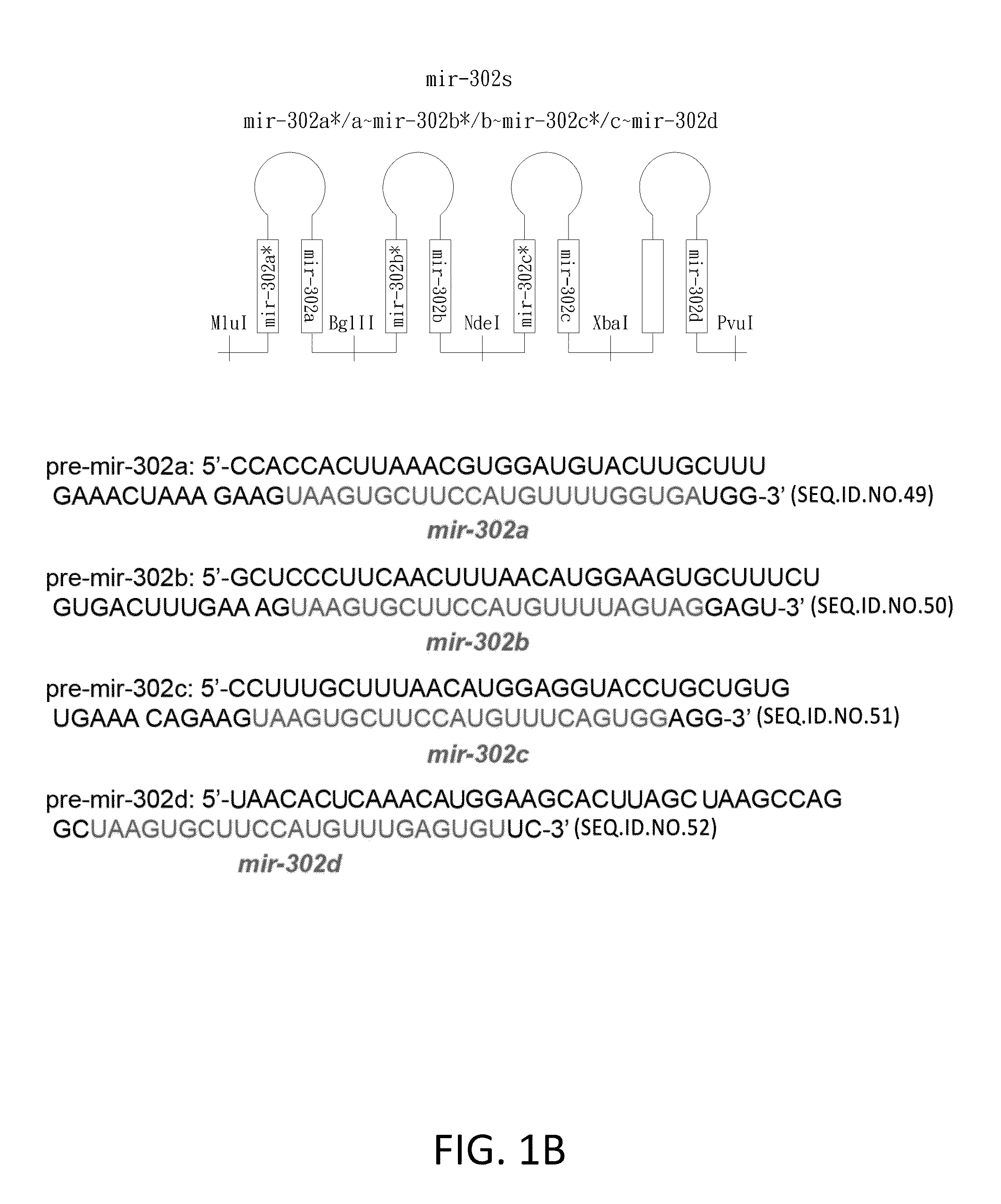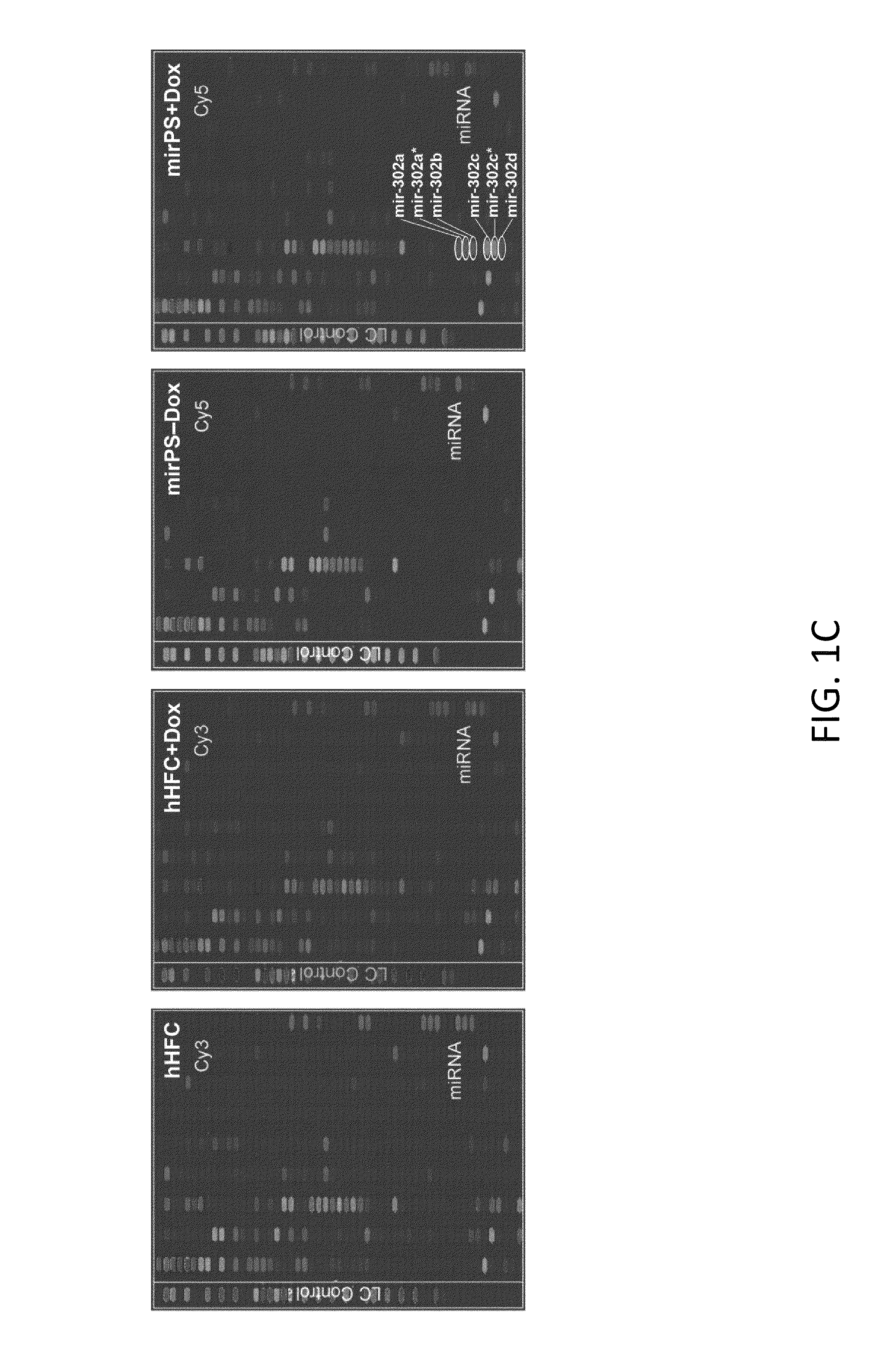Development of universal cancer drugs and vaccines
a technology of universal cancer and vaccines, applied in the direction of artificial cell constructs, drug compositions, organic chemistry, etc., can solve the problems of significant schism between respective cell cycle regulations, severe mitotic defects and lethality, and dna/rna-based therapeutic drugs and/or vaccines, so as to prevent the risk of random transgene insertion and cell mutation, prevent accumulation or over-saturation of rna, and facilitate removal and replacemen
- Summary
- Abstract
- Description
- Claims
- Application Information
AI Technical Summary
Benefits of technology
Problems solved by technology
Method used
Image
Examples
example 1
Cell Culture and Transfection
[0121]Human cancer NTera-2, HepG2, MCF7, PC3 and Colo829 cell lines were acquired from ATCC, while human hair follicle cells (hHFCs) were isolated and dissociated from a minimum of two hair dermal papillae by 4 mg / ml collagenase I digestion for 45 min in fresh RPMI 1640 medium supplemented with 20% FBS. For culturing melanocytes, the isolated cells were cultivated in Medium 254 with the addition of human melanocytes growth supplement-2 (HMGS-2, Invitrogen, Carlsbad, Calif.) in the absence of antibiotics at 37° C. under 5% CO2. Cultures were passaged at 70%-80% confluency by exposing cells to trypsin / EDTA solution for 1 min and rinsing once with phenol red-free DMEM medium (Invitrogen), and the detached cells were replated at 1:10 dilution in fresh Medium 254 with HMGS-2 supplements. For electroporation, a mixture of pTet-On-tTS-mir302s (10 μg) and pTet-On-Adv-Neo(−) (50 μg) was added with the isolated cells (20,000-50,000) in a hypoosmolar buffer (200 μl...
example 2
Construction of Recombinant Vectors Expressing mir-302s
[0122]The mir-302 familial cluster (mir-302s) was generated as reported (Lin et al., 2008). The mir-302s cluster consists of four parts, including precursor miRNAs (pre-miRNAs) of mir-302a, b, c, and d. Synthetic oligonucleotides (Sigma-Genosys, St. Louis, Mo.) used for constructing the mir-302s cluster were listed below. For expression, we mixed an equal amount (1:1) of the mir-302s cluster and a pre-made SpRNAi-RGFP recombinant gene (Lin et al., 2006 and 2008), and then digested the mixture with MluI / PvuI restriction enzymes at 37° C. for 4 hours. The digested mixture was collected with a gel extraction filter (Qiagen, CA) in 30 μl of ddH2O and ligated together using T4 DNA ligase at 8° C. for 16 hours. This formed a recombinant mir-302-expressing SpRNAi-RGFP gene, which was further cleaved with XhoI / HindIII restriction enzymes and inserted into a Dox-inducible pSingle-tTS-shRNA vector (Clontech, Palo Alto, Calif.). This forme...
example 3
MicroRNA (miRNA) Microarray Analysis
[0126]At 70% confluency, small RNAs from each cell culture were isolated, using the mirVana™ miRNA isolation kit (Ambion). The purity and quantity of the isolated small RNAs were assessed, using 1% formaldehyde-agarose gel electrophoresis and spectrophotometer measurement (Bio-Rad), and then immediately frozen in dry ice and submitted to LC Sciences (San Diego, Calif.) for miRNA microarray analysis. Each microarray chip was hybridized a single sample labeled with either Cy3 or Cy5 or a pair of samples labeled with Cy3 and Cy5, respectively. Background subtraction and normalization were performed. For a dual sample assay, a p-value calculation was performed and a list of differentially expressed transcripts more than 3-fold was produced. The result was shown in FIG. 1C.
PUM
| Property | Measurement | Unit |
|---|---|---|
| weight | aaaaa | aaaaa |
| weight | aaaaa | aaaaa |
| pH | aaaaa | aaaaa |
Abstract
Description
Claims
Application Information
 Login to View More
Login to View More - R&D
- Intellectual Property
- Life Sciences
- Materials
- Tech Scout
- Unparalleled Data Quality
- Higher Quality Content
- 60% Fewer Hallucinations
Browse by: Latest US Patents, China's latest patents, Technical Efficacy Thesaurus, Application Domain, Technology Topic, Popular Technical Reports.
© 2025 PatSnap. All rights reserved.Legal|Privacy policy|Modern Slavery Act Transparency Statement|Sitemap|About US| Contact US: help@patsnap.com



